2020-09-25
Words by Pablo Mis - Photographs by Tony Rath
In these times of COVID-19, Indigenous Peoples around the world are facing an uncertain future, and mounting food insecurity. Borders have closed, markets have shut down, access to towns and cities has become dangerous or impossible. Those communities who have lost rights to their ancestral forestlands find themselves most exposed to the shockwaves of this pandemic. We too, the Maya of southern Belize, are suffering. Nonetheless, this moment of crisis has given me cause to reflect on how fortunate we are that we still have our lands, and the knowledge required to live off them sustainably.
At a moment where travel has become hazardous and expensive, I want to use my words to allow you to visit our little village, which lies at the foothills of the Maya mountains and is home to 450 Q’eqchi Mayas, to show you how traditional ways of life have not just been preserved, but are right now helping communities like mine to survive during this global pandemic:
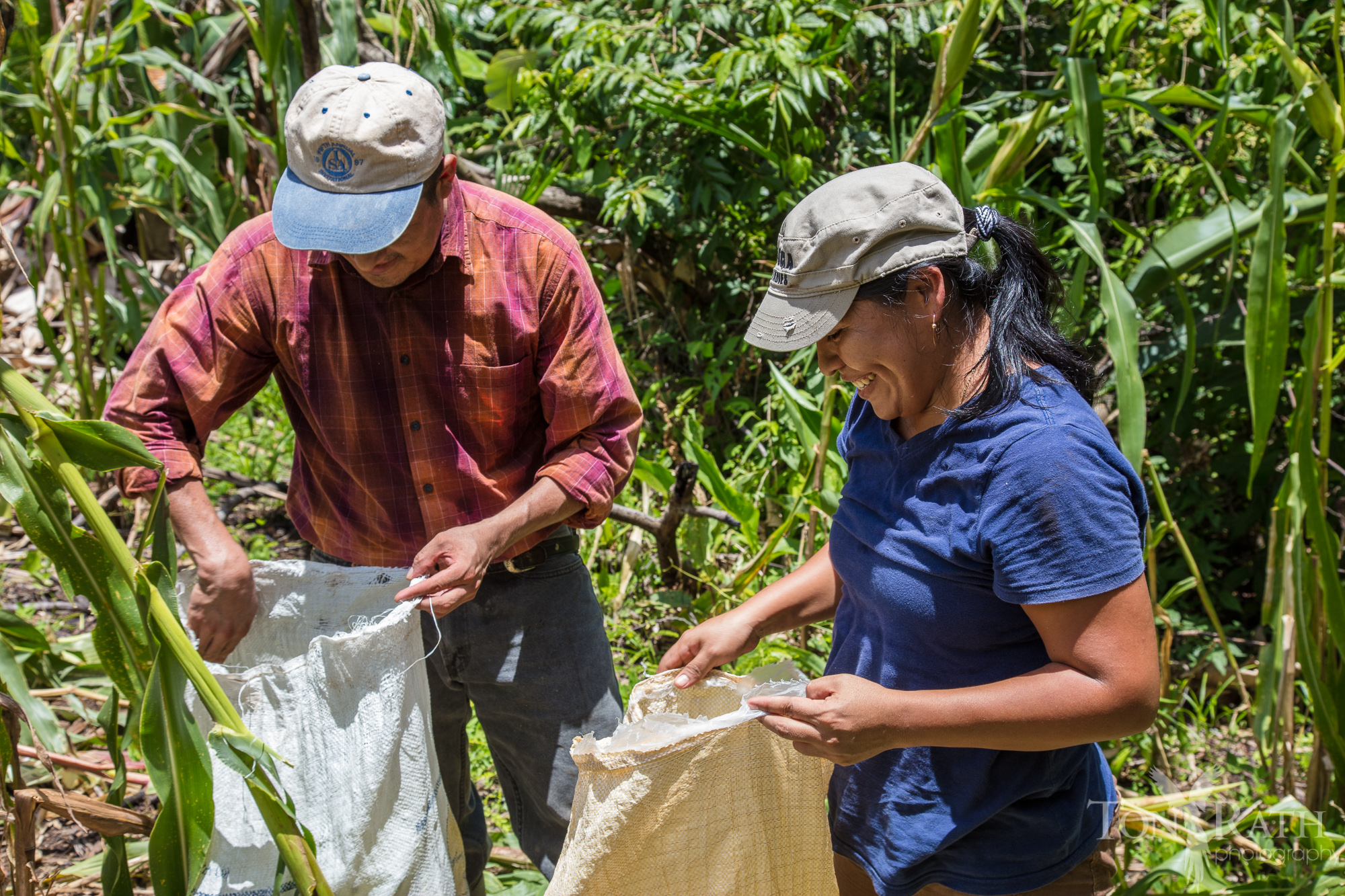
This particular morning starts early. My wife and I wade across flooded creeks as we walk the farm trail under the canopy of tropical Maya forests, to our corn field or q’a kaal. When we arrive there, we see that our crops – corn, bean and pumpkin – are growing well. In so-called Milpa agriculture, known to us as ka’t kaal, which has been practiced by the Mayan people for thousands of years, these crops are often referred to as “the three sisters” – complementing each other and keeping the soil fertile. Traditionally, a farmer would plant a seed of each species into a hole. The corn would grow first, providing a stalk for the beans, as it reaches towards the sun. The pumpkin remains low to the ground, shaded by the other plants, and keeping the weeds at bay. The pumpkin and the beans would replace the nitrogen drained from the soil by the corn, providing balanced agriculture reducing the need to rotate crops. It also adds a degree of security. If one crop fails, hopefully the others will survive, meaning families will have something to fall back on. When we see how our own crops are flourishing, we thank the Great Creator. As we begin harvesting, the cries of howler monkeys echo from the nearby forests through the forests we call home. The air is humid and heavy, and dark clouds gathering on the horizon indicate the coming of blessed rain showers.
As I gather young corn, my wife disappears deep into the field, gathering okox (mushroom) and kala’ (jippigappa). The greyish looking okox is a treat, which grows only during the time of Ka’t Kaal and is an important source of fibre for the Mayan people. Similarly, leafy kala’ with its cabbage-like taste, is a treasured plant that is kept and nurtured among the cornfields. By the time we are ready to return home we have gathered quite a feast – with ginger leaf and root for cooking, and serosi leaves for making a medicinal tea that has been used for generations, to help treat and prevent parasites, dysentery, and even painful menstruation.
"Our children have already learnt from their grandma how to prepare these dishes, so in no time the food is on the fire"
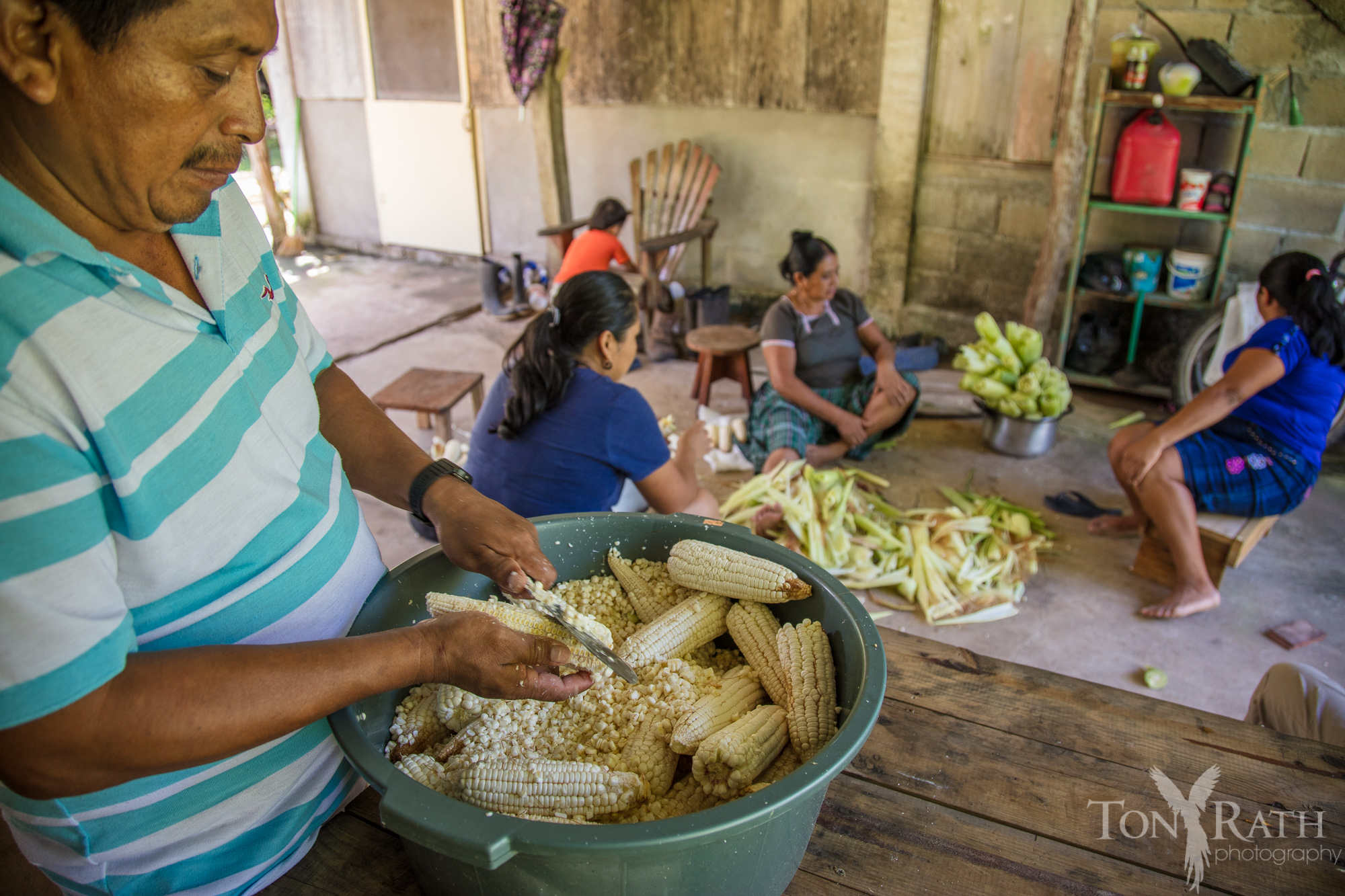
When we return home grandpa and grandma are there, and there’s a lively discussion as to which dishes to prepare – in the end we settle on matz (young corn porridge) and iswa or dukunu, (mashed corn cooked in corn leaves). Everyone gets involved. Our children have already learnt from their grandma how to prepare these dishes, so in no time the food is on the fire. First, we drink the matz, whilst we wait for the other food to cook. Our eldest niece has been fishing with her aunt and produces jun laan chi lancha kar (steamed fish in waha leaf). Grandma boils down the okox, adding q’em (masa or ground corn), salt and lots of different spices, creating a deliciously rich soup.
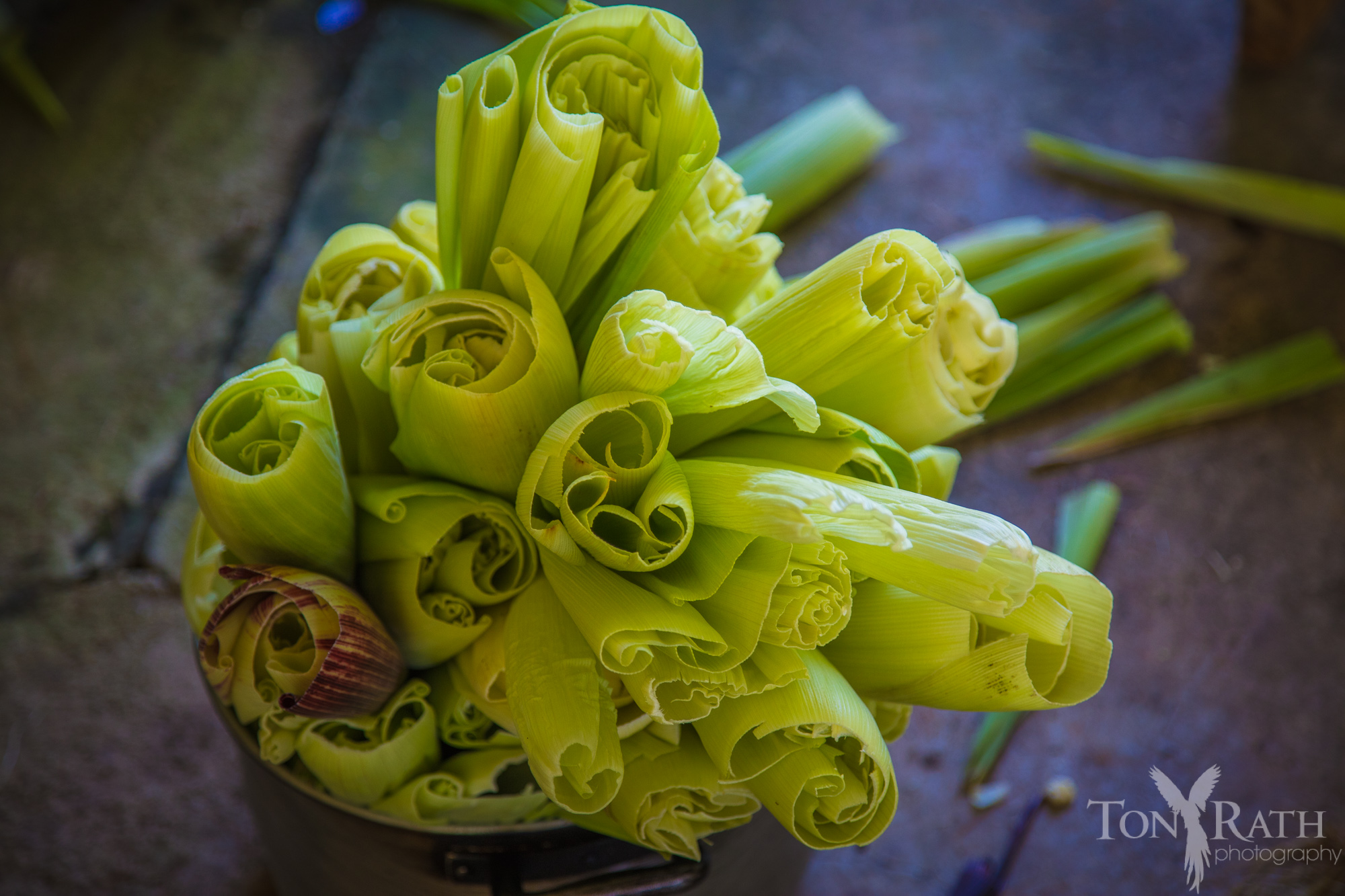
As she cooks she laments the disappearance of the okox mushroom, which are becoming more and more scarce as the large trees they grow on succumb to the stress being placed on Maya forests. When she was young in the 1960s, these forests were still large, but as they have been decimated by logging, land-grabbing and land use change, so the strain on the remaining tracts has grown, making traditional rotational agriculture harder, and giving the land less time to regenerate. These days the rate of destruction has at least slowed, but we must do more to revitalise what remains. First though, says Grandma, we must eat!
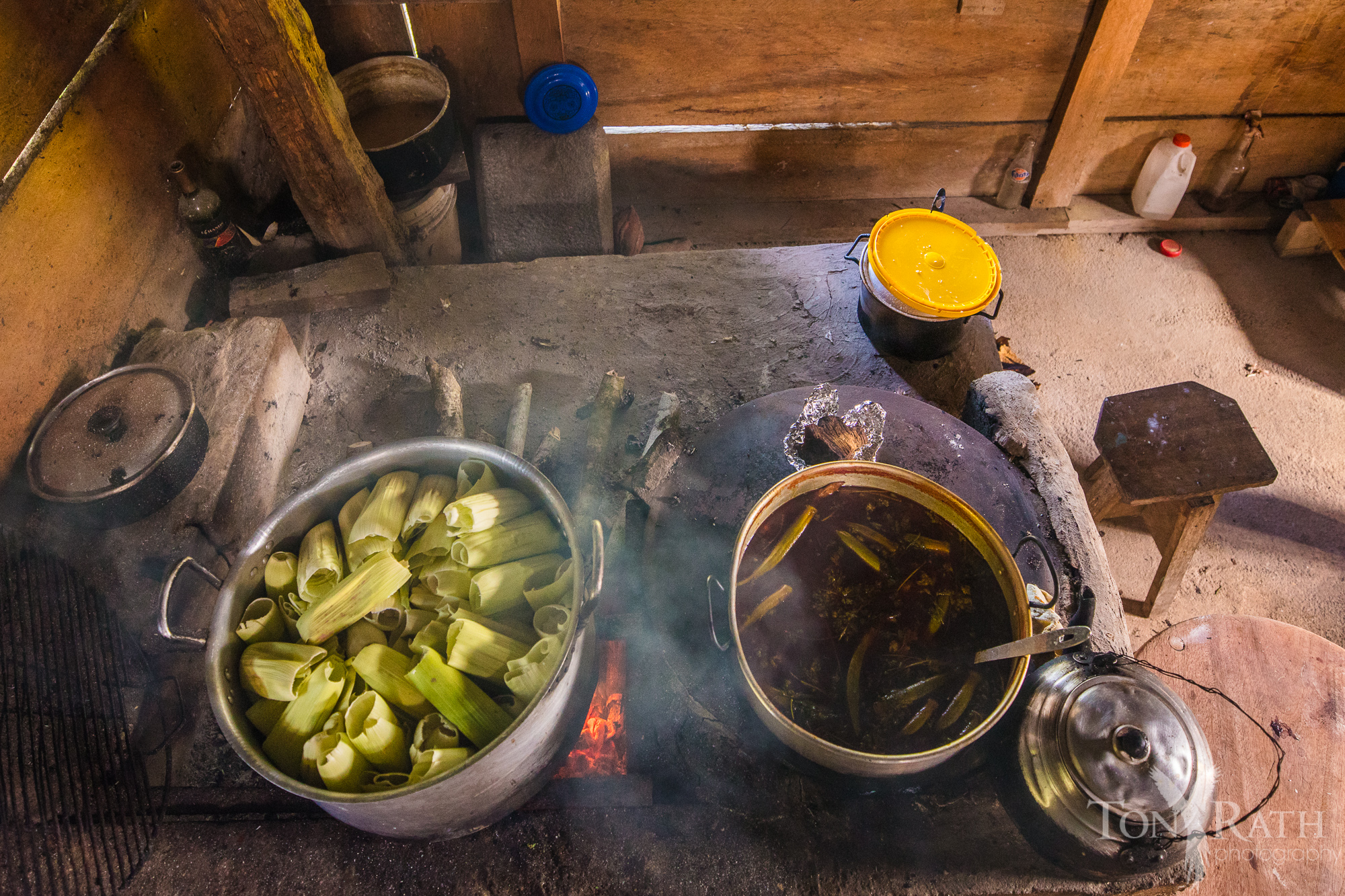
After our feast, we sit together as a family, three generations, contented. I think perhaps I enjoyed this meal the most, not just because it was delicious, but because it was made entirely from produce harvested from our own lands. Now more than ever, I am aware of how lucky we are that we can do this, at a time when the pandemic is creating so many problems for our indigenous brothers and sisters around the world. We, the Maya people of Toledo District, can most days meet our basic needs off the land. We have the freedom to do so. We have the right to do so. We still have lands that are blessed with resources. Many of our Indigenous Peoples and other local communities and minorities cannot do what we do. My mind turns to a story I read recently of a Guatemalan farmer, shot dead for collecting firewood on privately-held land. Here, we choose the best trees for firewood, sustainably harvesting and overlooking those trees that we believe do not give good coal. We have the freedom to be on our land – freedom that many do not have.
"Down the years, many have given their energy, sacrificed their time, their families, been intimidated, threatened and thrown into jail. Julian Cho, one of our most prominent voices, even paid with his life, killed by unknown assailants who to this day have not faced justice, simply for standing up for Maya rights and culture. "
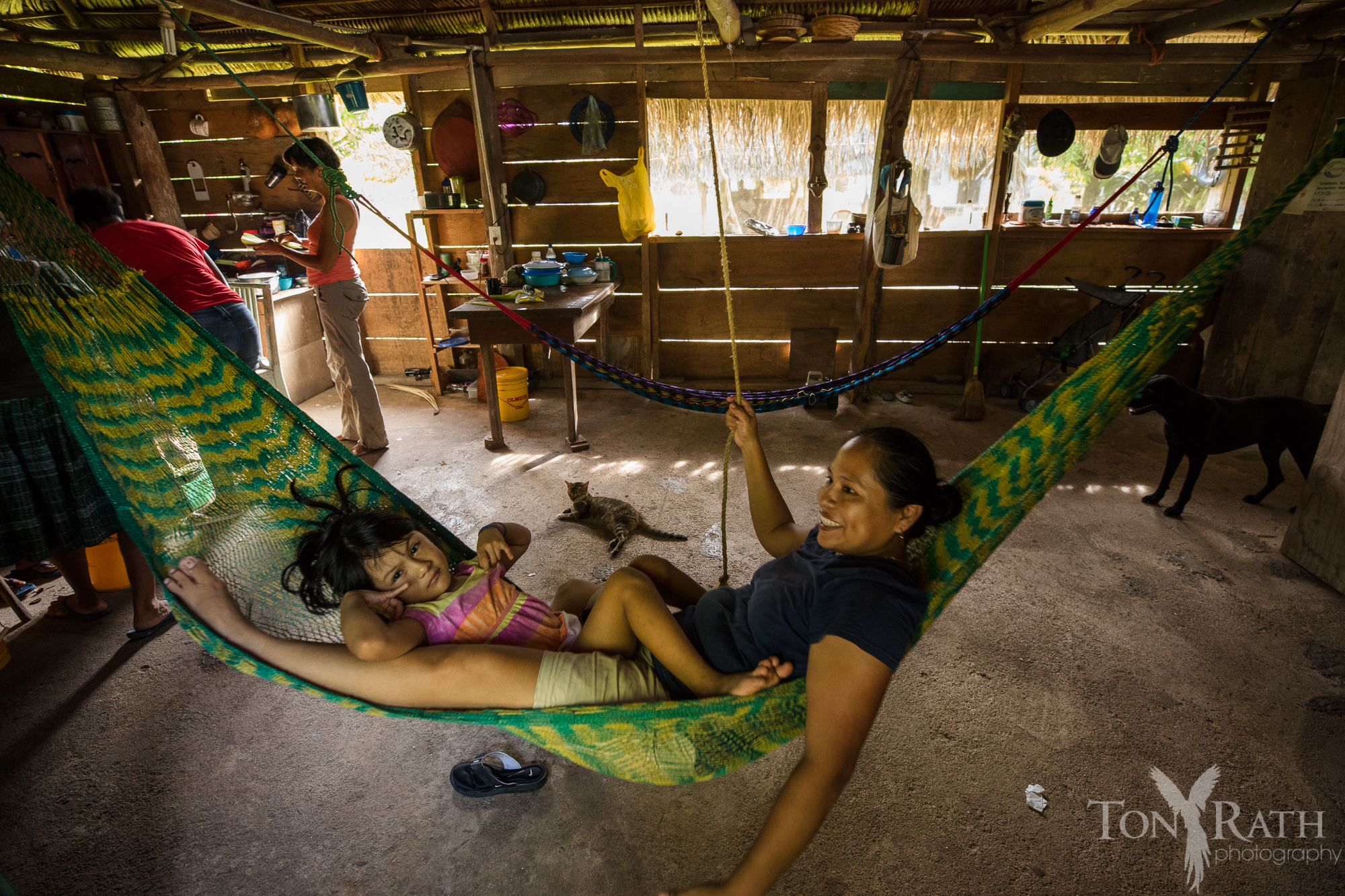
The ability to prepare simple and delicious food, harvested from our own lands is a simple pleasure, but ensuring we still have the right to do this has been far from simple. We know there is more to be done, and that we must share our experiences with other Indigenous Peoples and Local Communities around the world, learning from each other. As grandma counselled, we must do more to care for and revitalize Maya lands and Maya forests. It is now our duty to guarantee the freedom of our children’s children on these very lands, so that in fifty or a hundred or two hundred years, they too may be sitting around the fire together, with bellies full and their lands protected.
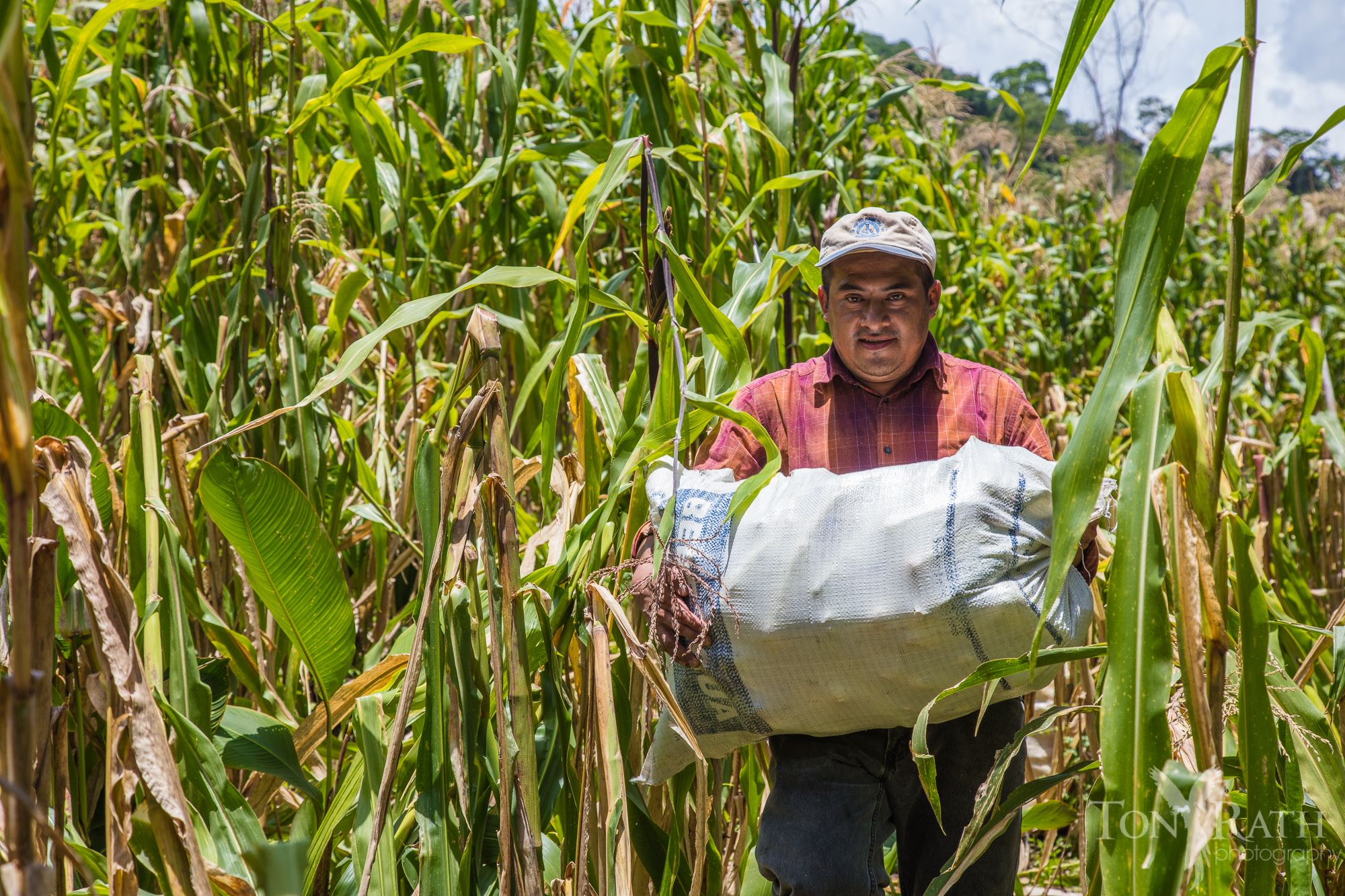
Pablo Mis is a member of the Maya community in the Toledo district of southern Belize. He is Programme Director for the Maya Leaders Association, which, along with the Toledo Alcades Association and the Julian Cho Society, have led a courageous decades-long battle to defend Maya rights.
Tony Rath is a Belize-based photographer and marine biologist, who has extensively documented the people and places of his adopted home since he moved there in 2008. He is a good friend of the Maya people, regularly working with them to create video and photographic content.
Other Blog Posts
Categories: